Analog (DC) vs Digital (DCC)
Track and Power Basics
Trains need track to run and power to move.
• Track: Comes in straight, curved, and switch sections. Most beginner sets include everything you need to make a simple loop.
• Power: You’ll choose between DC (direct current / analog control) or DCC (digital command control).
- DC is simple and controls one train at a time.
- DCC lets you run multiple trains independently on the same track and often includes sound and lights.
What Is DC (Analog) Control?
DC, or direct current, is the traditional way of powering model trains. The power from your power pack flows straight to the rails.
• Speed is controlled by adjusting the voltage: more voltage makes the train run faster.
• Direction is controlled by reversing the polarity of the current.
This system is simple, reliable, and cost-effective. However, there’s a limitation: every train on the same track receives the same power. To run two trains independently, you need to divide your layout into separate electrical blocks with switches to control which train gets power. While this works, the wiring can become complicated quickly.
What Is DCC (Digital Command Control)?
DCC takes a different approach. Instead of controlling the track, you’re controlling the locomotive itself.
• The rails always carry full power.
• Each locomotive has a small computer chip, called a decoder, installed inside.
• Your handheld controller, or throttle, sends digital commands through the rails. Only the locomotive with the matching address responds.
This means you can run multiple trains on the same track at the same time. Each train can have its own speed, direction, lights, and even sound features—all operating independently.
Key Differences at a Glance
• Control style: DC controls the track; DCC controls each locomotive individually.
• Number of trains: DC is limited to one train per track section unless you use block wiring; DCC allows many trains on the same track simultaneously.
• Cost and complexity: DC is simpler and less expensive, ideal for running one train at a time; DCC requires decoders and a DCC system, but opens the door to advanced operations.
Which System Is Right for You?
It all depends on your goals:
• If you’re running a small layout with one train at a time, DC may be all you need.
• If you want to run multiple trains, add sound, and simulate realistic operations, DCC gives you that flexibility.
Both systems have their place in the hobby, and many modelers start with DC and later upgrade to DCC as their layouts and ambitions grow.
